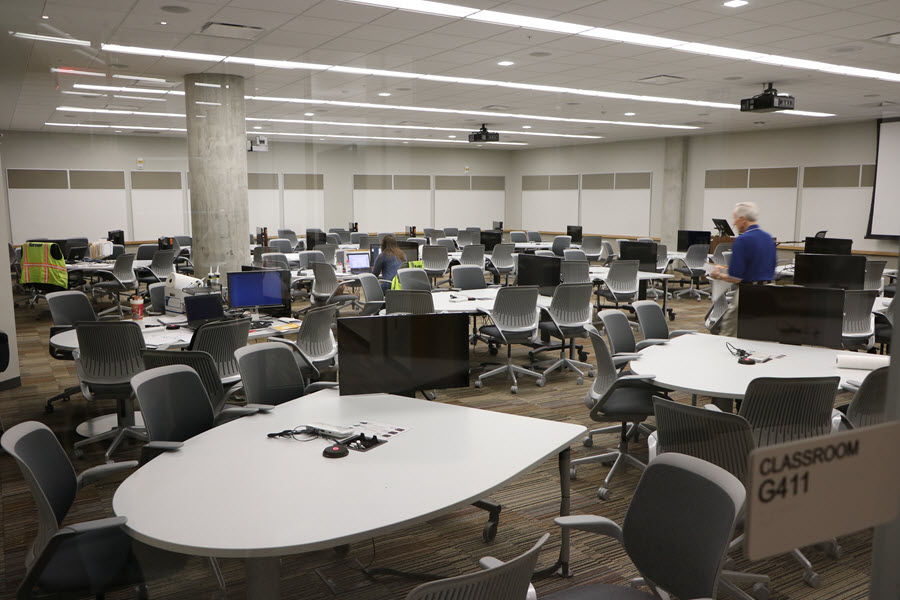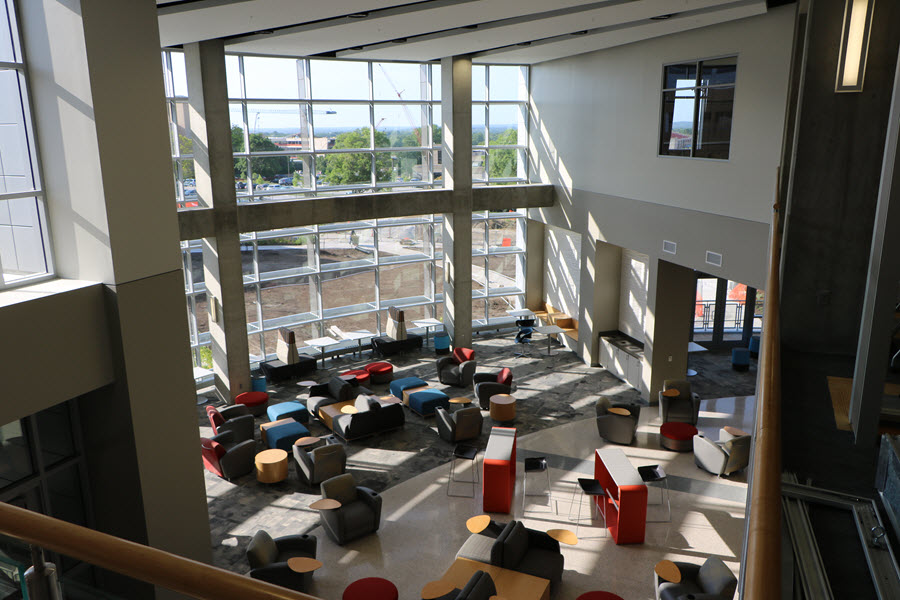By Doug Ward
Here’s a glimpse into the classroom of the future.
It’s huge, and I mean HUGE: big enough for a football field, a magical playground, a dig site for studying bones, and an area for playing with dogs, bears and dolphins. It has cool carpet and places for listening. The tables are spread out and you can choose among giant chairs, bouncy chairs and floating chairs. It has crayons, of course, but also drawers to hold skulls (from the dig site, no doubt) and a secret room. Best of all, it has a portal to a lake and a monorail that will take you anywhere.
Are you on board? I was when I visited Paula Kahmann’s class at Rushton Elementary School in Shawnee, Kan., last week. Kahmann’s students are working on a project to design an ideal classroom, and they sought my advice on how to do that.
I did offer my input, although my philosophy of classroom design is fairly simple: A classroom should be flexible, but there is no perfect design. (Students wrote that down.) It should have movable tables and chairs, not individual desks. It should have good lighting (preferably natural light), whiteboards, electrical outlets, strong wi-fi, and a means of displaying digital screens. It should be easy to move around in, and it should be comfortable. That is, you should want to spend time there.
I explained only a few of those things because I didn’t want to be overly prescriptive. Nor did I want to go off on a tangent about the failings of traditional classrooms, which are little more than warehouses for instilling passivity than places for learning. (I didn’t say that.)
Rather, I wanted the students to approach their room with open minds and bubbling imaginations. Kahmann had done a great job of encouraging that in earlier class periods. Students had drawn pictures of what their ideal classroom might look like, and two by two they accompanied me to a bulletin board in the hallway and showed me. I’ve included some of those pictures in this post.
One of my favorites included spare language that provided a poetic take on the world of learning:
I Would like Star.
I Would like plants.
I Would paint the Wall orange.
Students included many traditional elements in their classroom pictures and in our discussions. They thought an ideal classroom should have books, games, a snack bar, a bathroom, and a drinking fountain. It should also have places for listening, comfortable chairs, colored pencils and carpet.
Those are great ideas. An ideal classroom, no matter how futuristic, still needs to be functional.
After we had talked for a while, students asked me questions they had compiled before I came:
What kinds of desks should students have? Ones that allow collaboration, I said.
What kinds of chairs are best? Comfortable ones that fit the tables, I said.
Should classrooms have iPads? (Theirs did.) Sure, I said, as long as teachers and students learn how to use them for learning.
Should students have homework? Sometimes, I said, mostly because it helps them learn in different places.
Should classrooms have live insects? (Theirs did.) Certainly, I said, as long as the insects don’t get loose.
My Socratic approach led to more chaos than learning, I’m afraid, and I left with a renewed appreciation for the work that elementary school teachers do.
I also left with a renewed appreciation for the minds of children. An ideal classroom should nurture those children. It should channel their energy and their awe, not contain it. It should foster experimentation and provide outlets for exploration. It should inspire them to learn, not force them to learn. It should encourage the unfettered creativity we all need to thrive in both the physical and digital worlds.
All of those things apply to college classrooms as much as they do to second-grade classrooms.
I’m not sure what sort of room design the second-graders in Ms. Kahmann’s class will end up with. No doubt, it will be one that inspires them and that makes me want to visit. Maybe next time, I’ll slip through the portal or climb aboard the monorail.
Doug Ward is the associate director of the Center for Teaching Excellence and an associate professor of journalism. You can follow him on Twitter @kuediting.









Recent Comments